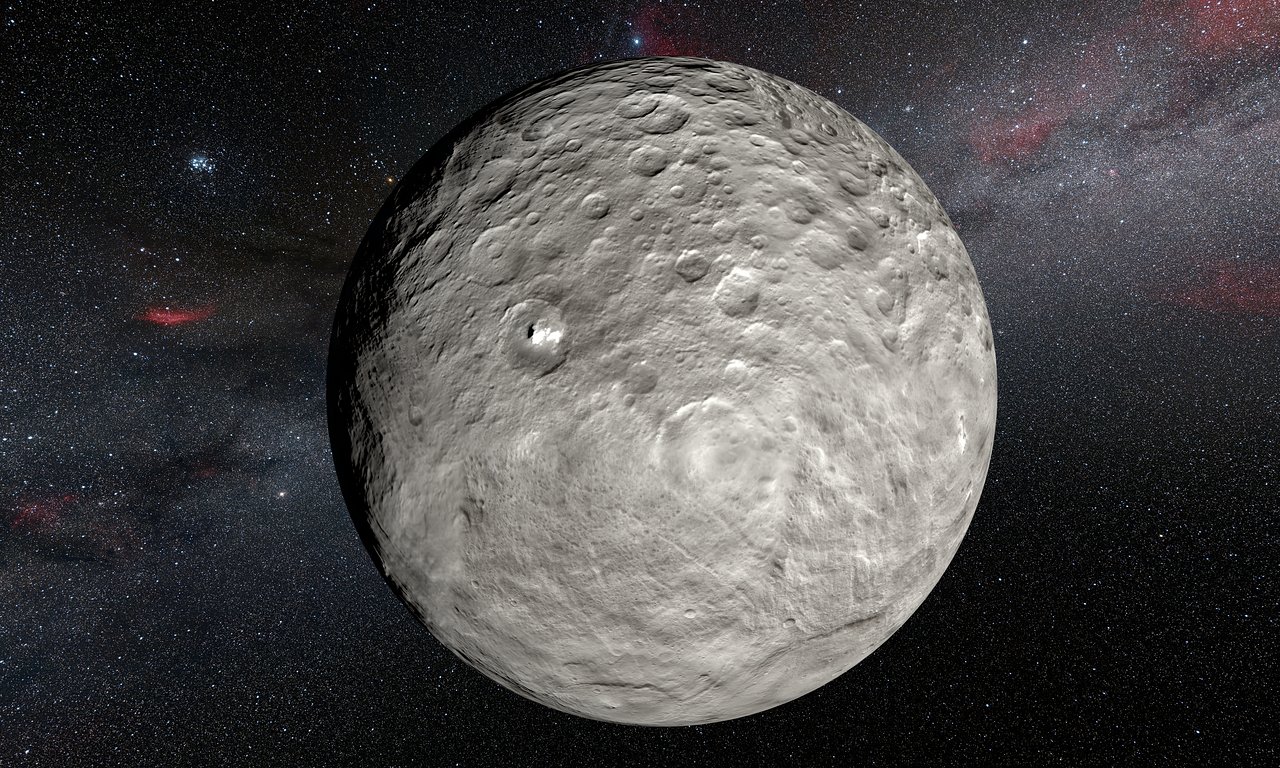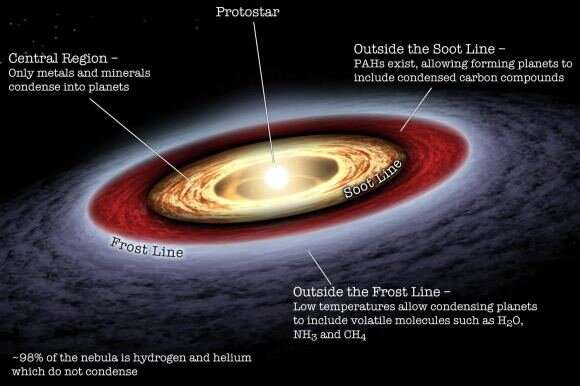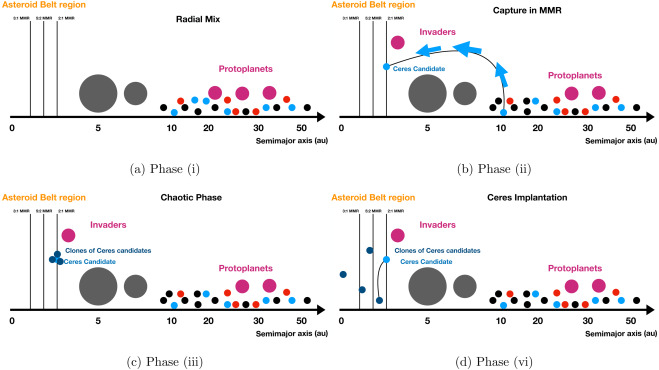The dwarf planet Ceres formed farther from the Sun than the Asteroid Belt in which it is now located. The developed model shows that it, along with a bunch of other objects, could migrate here during chaotic transformations in the Solar System.

Atypical Object
The dwarf planet Ceres is the largest object in the Asteroid Belt. Its diameter exceeds 1000 kilometers and scientists have long had questions about how it could have formed there. A recently published study shows that this object is a guest from more distant parts of the Solar System.
Ceres is not the only dwarf planet between Earth and Mars. Besides it, there are also Vesta and Pallas, about which there is definitely something more than large asteroids and Hygiea, about which we still know quite a bit. In total, these four objects account for 50 percent of the mass of the Asteroid Belt.
From these four objects, something is known about the chemical composition only in relation to Ceres and Vesta. We owe this to the Dawn device. Thanks to its observations, we learned that the largest dwarf planet has a ghostly gas shell. Moreover, its gravity is still too weak to hold gas molecules and is constantly replenished from the depths.
Beyond the frost line
Thanks to Dawn’s research, we know that Ceres has a lot of water ice and ammonia. At the distance from the Sun where Ceres is located, these substances evaporate very slowly. And this led scientists to believe that this dwarf planet could have formed behind the frost line and later migrated to the inner regions of the system.

The frost line is the distance from the Sun at which volatile substances stop evaporating in vacuum conditions. For various compounds, such as water, ammonia, methane, carbon dioxide and carbon monoxide, this limit is different. But astronomers usually simplify this task by setting a single conditional limit.
Now the frost line runs approximately along the orbit of Jupiter. However, throughout the history of the system, it could change due to the migration of planets, an increase in the brightness of the luminary and the permeability of the environment. Scientists decided to simulate where Ceres was supposed to form and under what conditions.
How Ceres was formed
According to researchers, the birthplace of Ceres is an area in the orbit of Saturn. At the dawn of the Solar System, when its two largest planets had already formed, there were still numerous ice dwarfs in the area where Uranus and Neptune are now located, one of which was the embryo of the largest body of the Asteroid Belt.
In the first stage, this object rotated in its orbit behind the frost line. On the second, it was captured in resonance with Jupiter and moved into an eccentric orbit that brought it into the inner regions of the Solar System.

At the same time, it was not alone there. In addition to the Ceres embryo, there were several other similar bodies in the Asteroid Belt similarly. The presence of a body with a mass three times that of the earth also looks likely. Probably, it could be one of the embryos of the “ice giants”. In such conditions, chaos has formed, which is the third stage of the new model.
However, this disorder existed for a relatively short time. Some of the objects, including the largest one, left the Solar System, while the rest, including Ceres, moved to stable orbits. How true this picture is and whether it can be applied to Vesta, Pallas and Hygeia, the future will show.
According to phys.org
According to phys.orgFollow us on Twitter to get the most interesting space news in time
https://twitter.com/ust_magazine

